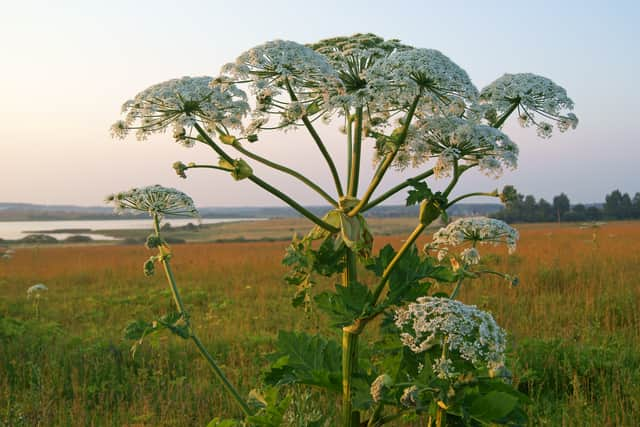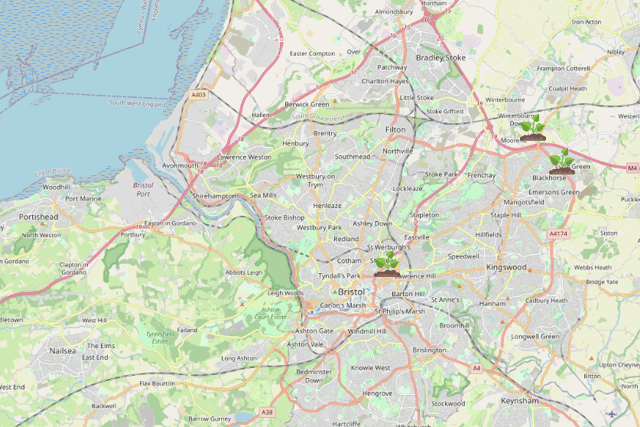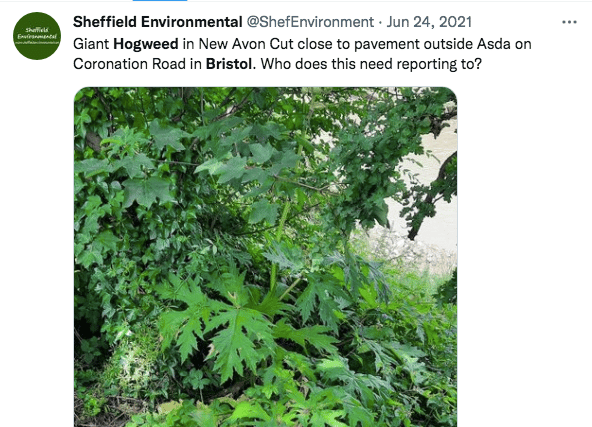Giant Hogweed: Warning over poisonous plant as Bristol hotspots are revealed
and live on Freeview channel 276
It’s warming up out there and we’re all heading out to rivers, parks and outdoor spaces across Bristol. But, according to an app, we need to be keeping an eye out for Giant Hogweed.
The plant, which is often described as Britain’s most dangerous, is thought to be spreading across the UK, with three areas in Bristol highlighted as a warning.
Advertisement
Hide AdAdvertisement
Hide AdAccording to Bristol City Council, “Giant Hogweed isn’t native to the UK. It can be identified using the guide on the Non-Native Species Secretariat website.”
It’s also easily confused with the much smaller native, common hogweed and cow parsley, whis aren’t plants that you need to be concerned about in terms of your health. Bristol City Council continues that “Giant Hogweed mainly grows next to water, in damp meadows or on derelict land.”
The Woodland Trust states that the plant originates from the Caucasus Mountains and Central Asia, and that “it was first introduced to the UK as an ornamental in the 19th century where it escaped and naturalised in the wild.
“It can now be found throughout much of the UK, especially colonising river banks where its seeds are transported by the water.”
Advertisement
Hide AdAdvertisement
Hide Ad

The highly invasive nature of the plant is due to the fact that its seeds distribute easily.
So, what’s so bad about it? Unfortunately, contact with Giant Hogweed means that the sap causes painful burns and makes your skin sensitive to strong sunlight.
According to the Woodland Trust, “if the sap gets onto your skin, then you are exposed to sun, your skin can blister badly and blistering can recur over months and even years. This is known as phytotoxicity.”
If you do happen to come into contact with the plant, wash the area thoroughly immediately, seek medical advice, and do not expose the area to sunlight for a few days.
Advertisement
Hide AdAdvertisement
Hide Ad

The map shows that there are three areas of concern in Bristol. One of which is close to St Agnes, St Jude’s and Easton, on the riverbank off Riverside Park by Pennywell Road.
Another area is in Blackwell Common in Lyde Green and the third area of concern is along the riverside by Folly Brook just off Bury Hill and Down Road in Winterbourne Down.
It seems that, despite the app, there are areas that have fallen through the cracks with @shefenvironment, one user on Twitter, posting in the summer of 2021 that he had found Giant Hogweed along the riverbank on Coronation Road in Southville.


So, what should you look out for?
• Looks like large Cow Parsley
Advertisement
Hide AdAdvertisement
Hide Ad• Fully grown, it can reach towering heights of between 1.5m to 5m and have a spread of between 1 and 2m
• The stems are green with purple blotches and stiff, white hairs around the base of leaf stalks
• The leaves are large, often up to 1.5m wide and 3m long with some smaller leaflets. They look a bit like rhubarb leaves, with irregular and jagged edges
• The flowers appear in June and July and are small and white in appearance
Comment Guidelines
National World encourages reader discussion on our stories. User feedback, insights and back-and-forth exchanges add a rich layer of context to reporting. Please review our Community Guidelines before commenting.
